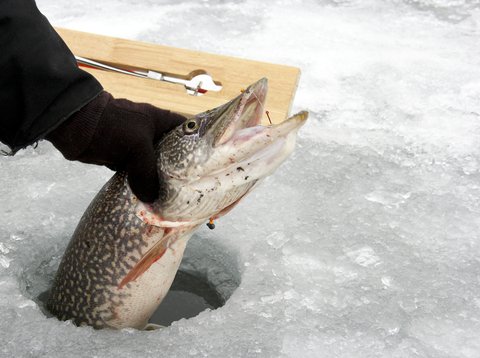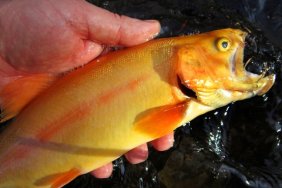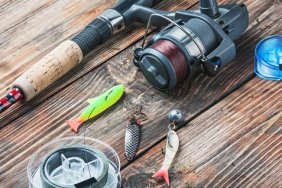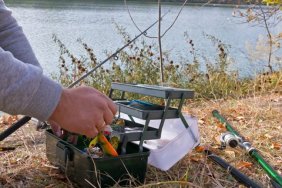For many anglers, tip-ups are the preferred method of taking northern pike through the ice. They allow anglers to fish multiple holes, are easy to use and have a proven record of success, yet there are a few important rules to follow if you want to catch more northern pike with your tip-ups this winter.
Quality
Select a sturdy brand of tip-up that will withstand the tough conditions of winter angling. Inexpensive brands will save you money in the short term, but may cost you fish during the season.
Bait
One of the most significant keys in tip-up fishing is keeping your bait lively. Changing minnows often is extremely important, but how you hook the minnow also plays a role in keeping it lively. One of the best tips is to use a chub and hook it through the belly, so it hangs upside down in the water. The chub’s natural reaction is to get right side up and it will struggle and struggle in its attempts to do this. This provides plenty of extra action that will attract northern pike.
Weeds
Northern pike are attracted to weeds, even in the winter. Look for the weedline and concentrate your efforts there. If the ice is snow covered and you cannot see the weeds, try using an underwater camera to help locate the weeds. Multiple tip-ups set along the weedline will dramatically increase your chances of catching more northerns.
Moving water
Many fish are attracted to moving water, such as where a stream enters a lake or water flows between an island and the mainland. These can be excellent areas to place your tip-ups. Be careful though, moving water often creates thin ice, so make sure the ice is thick enough to fish safely.
Depth
If you are unsure at what depth the fish are located, try setting your tip-ups at a variety of depths. When your flag goes up on a tip-up, and you have a fish, adjust the rest of your tip-ups to that depth. Often northern pike can be found in less than 10 feet of water during the winter months, so start shallow and gradually work your way to deeper water.
Drilling hole
When you arrive at the area you want to fish, drill a high number of holes so you can later move your tip-ups without spooking the fish.
Line and leaders
Do not skimp on line for your tip-ups. Use the same quality line you would use on your fishing rod. Sometimes tip-ups come spooled with line. Your best bet is to strip off that line and spool it with your own. A quality steel leader is important too. The sharp teeth of a northern pike can rip through line or mangle a cheap leader.
Of course, few things in ice fishing are as exciting as seeing the flag pop up on your tip-up. If you want to see more flags popping on your tip-ups this winter, follow this simple tips and you will be on your way to a more productive winter season.
Photo credit: Dreamstime








